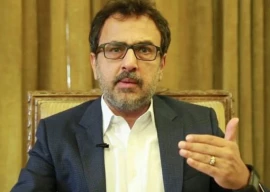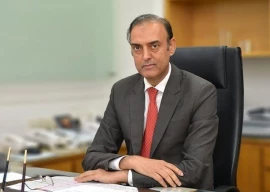
Senior defence officials from Pakistan and India are set to open two-day talks in New Delhi today, marking the latest efforts by the two nuclear-armed neighbours to push for the settlement of the Siachen – world’s highest battlefield – dispute.
However, the talks – first of their kind in four-years – are unlikely to produce any major breakthrough, a Pakistani defence official told The Express Tribune.
The negotiations on Siachen between Pakistan Defence Secretary Lt. General (retd) Syed Athar Ali and his Indian counterpart Pradeep Kumar are part of the composite dialogue the two countries had agreed to resume in April this year.
The peace process remained suspended for almost two and a half years following the November 2008 Mumbai attacks, which India blamed on Laskhar-e-Taiba which is allegedly based in Pakistan.
However, the two neighbours revived the process when Prime Minister Yousaf Raza Gilani, at the invitation of his Indian counterpart Manmohan Singh, visited Mohali to watch the 2011 World Cup cricket semi-final between the two archrivals.
Indian media has reported that New Delhi is expected to press Pakistan to authenticate the 110-km Actual Ground Position Line (AGPL) along the Siachen Glacier-Saltoro ridge in Jammu and Kashmir when the defence secretaries meet.
However, a Pakistani official says this will be the most contentious debate between the two countries’ negotiators.
“Pakistan cannot authentic AGPL along the Siachen Glacier,” said the official.
The conflict began in 1984 when Indian forces launched a successful operation to force Pakistani troops to retreat west of the Saltoro ridge. Since then the two countries fought intermittently in the region, as high as 20,000 feet, until it ended in a ceasefire in 2003.
Former president Pervez Musharraf once stated that Pakistan lost almost 900 square miles of territory in Siachen due to the Indian operation. Over 2,000 troops have died from both sides, majority of them not because of clashes but due to harsh weather.
“It is a false ego that prevents the two countries from the resolution of the Siachen dispute,” commented defence analyst Lt. General (retd) Talat Masood.
“We have agreements on the table on Siachen and it’s just a question of political parties to make the next decisive move,” he added. But, given the history, he said he expected “some movement” in the talks but not any major breakthrough.
History shows that apart from the Indus Water Treaty signed in 1960, Pakistan and India have yet to resolve a single issue bilaterally.
Published in The Express Tribune, May 30th, 2011.

















COMMENTS (16)
Comments are moderated and generally will be posted if they are on-topic and not abusive.
For more information, please see our Comments FAQ